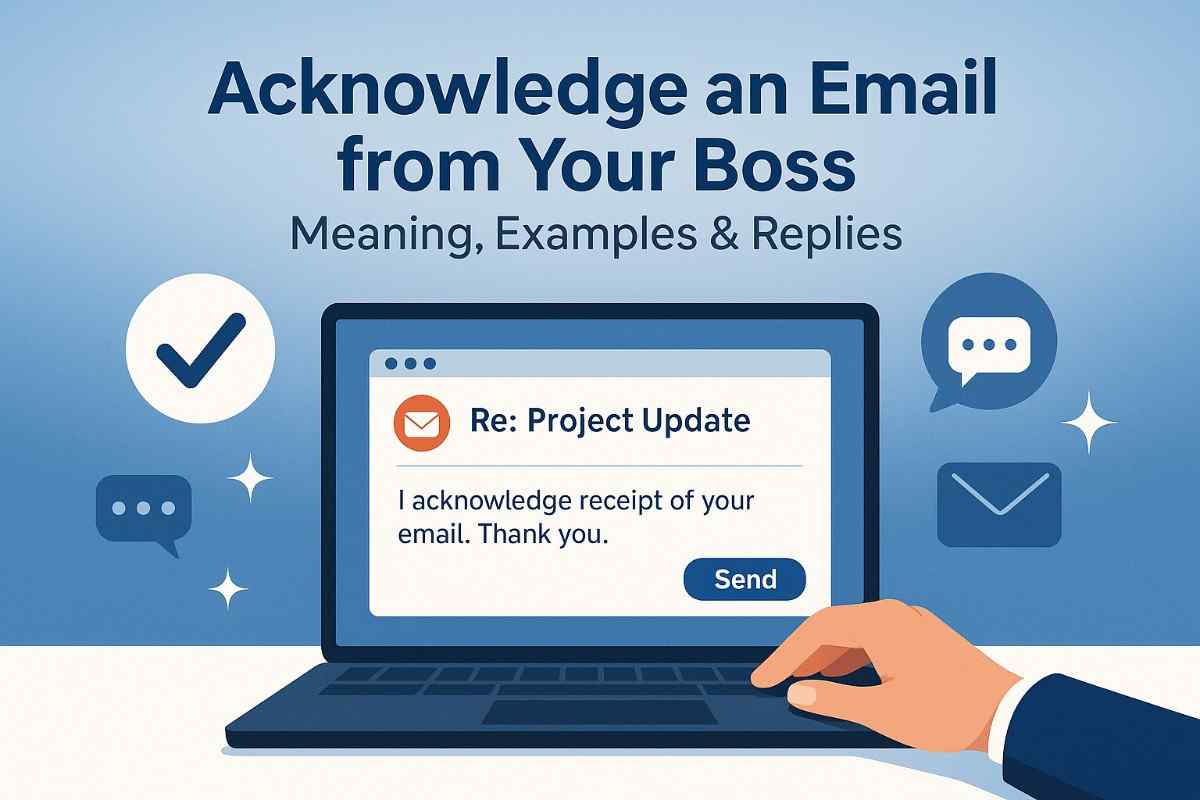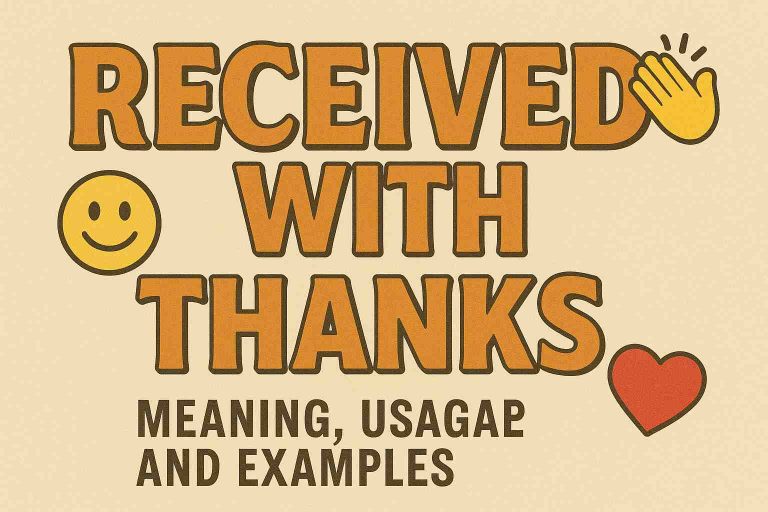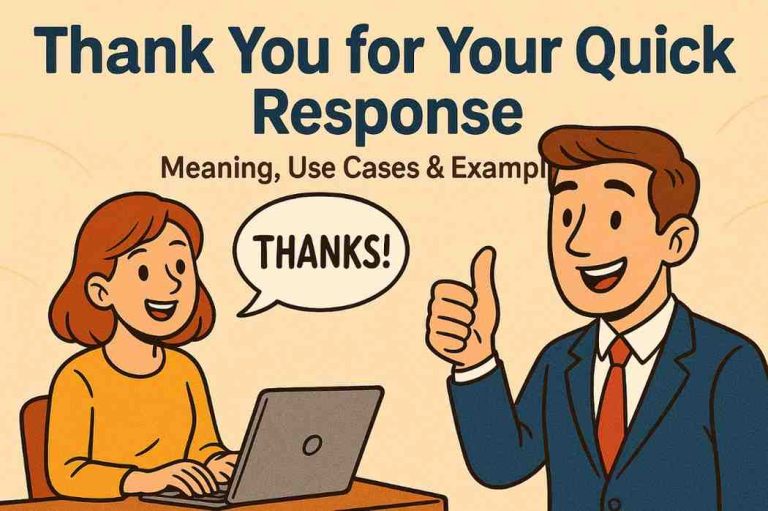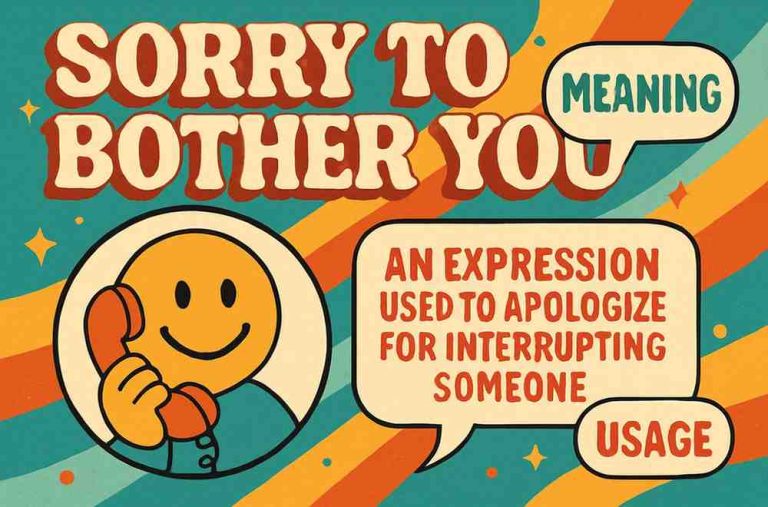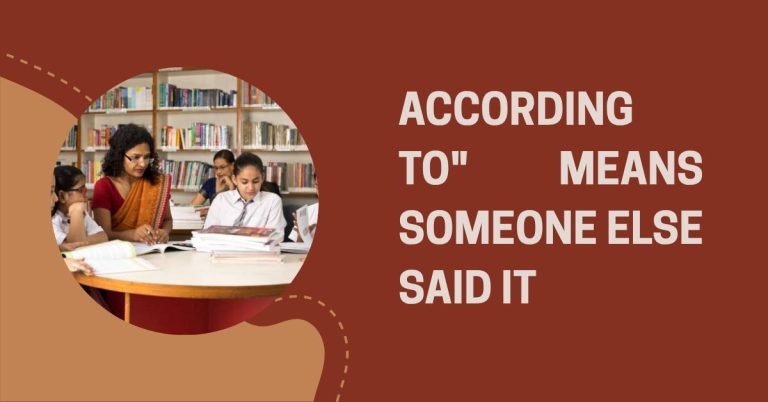Acknowledge an Email from Your Boss – Meaning, Examples & Replies
Let’s face it — getting an email from your boss can stir up a mix of emotions. Maybe it’s a task, a compliment, or just an update. Either way, you’re expected to respond — and quickly. But how do you reply in a way that’s polite, clear, and professional? This is where the simple act of acknowledging the email comes into play.
Acknowledging an email doesn’t mean giving a full reply. It just means letting the sender know you’ve received and understood the message. It shows you’re paying attention, and more importantly, that you respect their time.
In this guide, you’ll learn what this phrase really means, when and where to use it, alternatives you can try, and sample responses you can use in everyday work.
What Does “Acknowledge an Email from Your Boss” Mean?
When someone says “acknowledge an email,” they’re asking for a brief confirmation. You’re not expected to provide all the answers right away. You’re just showing that you’ve seen the message and will act on it if needed.
This matters more when your boss is involved. A quick response signals reliability and professionalism. It also builds trust over time.
Examples of acknowledging an email:
- “Thanks, I’ve received your email.”
- “Noted. I’ll get back to you shortly.”
- “Understood, working on it now.”
It’s short, polite, and to the point.
When and Where to Use “Acknowledge an Email from Your Boss”
You don’t need to reply to every email, but when your boss sends you one, a response is usually expected — even if it’s just a confirmation.
Here’s when acknowledging makes sense:
- Your boss assigns you a task.
- They send important information.
- They request a reply.
- They follow up on a meeting.
And here’s where you’d use it:
- Internal email platforms (like Outlook or Gmail)
- Project management tools (like Slack, Asana)
- Even quick messages on MS Teams or Zoom chats
Don’t overthink it. The goal is simple: confirm receipt and show you’re on it.
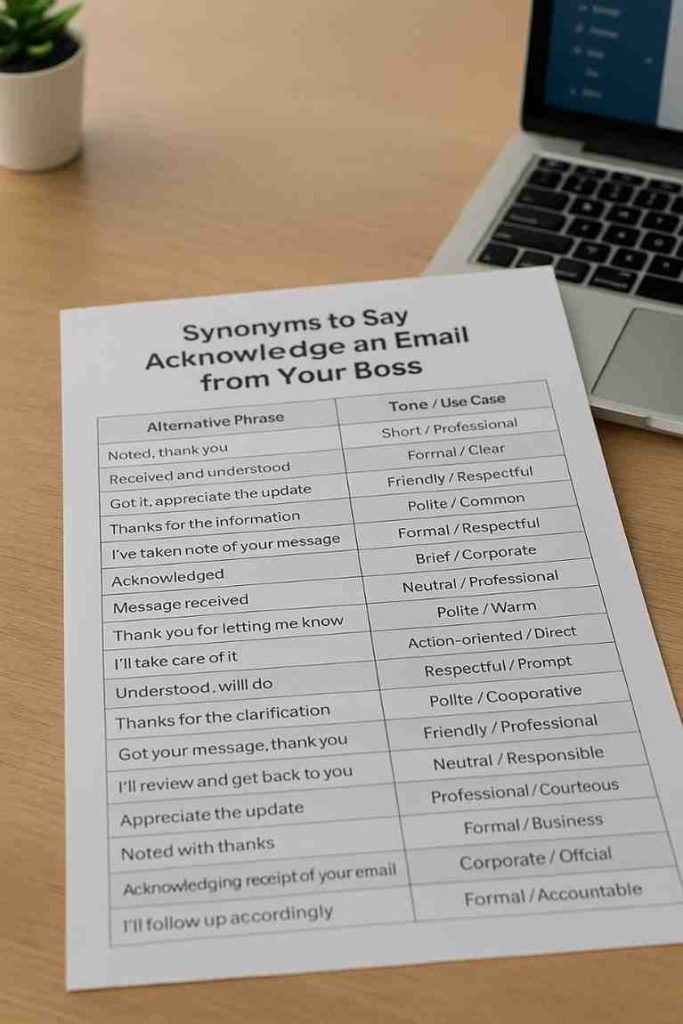
19 Synonyms to Say “Acknowledge an Email from Your Boss”
There are many ways to say the same thing without sounding robotic. Here are 19 alternatives:
1. Received, thanks
Meaning: You got the message.
Explanation: Short and polite. No extra detail.
Example: “Received, thanks. I’ll review and reply if needed.”
Best Use: Daily communication or casual internal emails.
2. Got it
Meaning: Simple confirmation.
Explanation: Informal, but still clear.
Example: “Got it. Will do.”
Best Use: Quick chats or messages where tone is relaxed.
3. Noted
Meaning: You’ve understood the information.
Explanation: Short, direct, and professional.
Example: “Noted. Thanks for the heads up.”
Best Use: Great for updates or instructions.
4. Understood
Meaning: You clearly got the message.
Explanation: Slightly more formal than “Got it.”
Example: “Understood. I’ll move forward with the plan.”
Best Use: When your boss gives direction or feedback.
5. Acknowledged
Meaning: You’ve seen and confirmed the message.
Explanation: A bit formal. Common in structured teams.
Example: “Acknowledged. Task will be done by EOD.”
Best Use: Formal settings or regulated industries.
6. Will do
Meaning: You’ll take action.
Explanation: Implies confirmation and action.
Example: “Will do. Thanks for the update.”
Best Use: Task-based messages.
7. Thanks, I’ll take care of it
Meaning: You’ve received and will handle it.
Explanation: Shows gratitude and responsibility.
Example: “Thanks, I’ll take care of it today.”
Best Use: When assigned a task.
8. Thanks for the update
Meaning: You’re acknowledging the info.
Explanation: Polite and clear.
Example: “Thanks for the update. Noted.”
Best Use: Status or progress updates.
9. Sounds good
Meaning: You agree and confirm.
Explanation: Relaxed but positive.
Example: “Sounds good. I’ll follow up by tomorrow.”
Best Use: Informal work relationships.
10. Alright, I’ll get started
Meaning: You’re acknowledging and beginning the task.
Explanation: Confirms receipt and action.
Example: “Alright, I’ll get started on this right away.”
Best Use: After receiving a new assignment.
11. I’ll keep you posted
Meaning: You’ll follow up later.
Explanation: Shows active engagement.
Example: “Got it. I’ll keep you posted on progress.”
Best Use: Project updates or deliverables.
12. Thanks, I’ll review this
Meaning: You’ve received and plan to go over it.
Explanation: A soft acknowledgment.
Example: “Thanks, I’ll review this and follow up if needed.”
Best Use: Reports, attachments, or documents.
13. Copied
Meaning: You’ve read and understood.
Explanation: Common in military or logistics environments.
Example: “Copied. Will proceed as planned.”
Best Use: Fast-paced or command-heavy teams.
14. Affirmative
Meaning: You agree and acknowledge.
Explanation: Formal, sometimes technical.
Example: “Affirmative. Will adjust accordingly.”
Best Use: Engineering, aviation, or ops teams.
15. Absolutely
Meaning: Confirms with enthusiasm.
Explanation: Shows positive engagement.
Example: “Absolutely, I’ll handle that right away.”
Best Use: When you want to show initiative.
16. I’ll take it from here
Meaning: You’re assuming control.
Explanation: Implies confidence and clarity.
Example: “Noted. I’ll take it from here.”
Best Use: When a task is handed over.
17. Sure thing
Meaning: Informal agreement.
Explanation: Friendly and upbeat.
Example: “Sure thing! I’ll take care of it.”
Best Use: Teams with casual tone.
18. I’m on it
Meaning: Immediate action.
Explanation: Short and proactive.
Example: “Got it. I’m on it.”
Best Use: Time-sensitive tasks.
19. OK, working on it
Meaning: You’ve started.
Explanation: Brief and clear.
Example: “OK, working on it now.”
Best Use: Task confirmations.
Also See – What to Say Instead of “Happy Married Life” – 21 Better Alternatives with Examples
Simple Responses to “Acknowledge an Email from Your Boss”
Now let’s bring it all together. Here are a few email-ready replies you can use:
Example 1:
“Hi [Boss’s Name],
Thanks for your email. I’ve received the details and will get started right away. Will keep you posted.”
Example 2:
“Hello [Boss’s Name],
Noted with thanks. Let me know if there’s anything else you’d like me to cover.”
Example 3:
“Hi [Boss’s Name],
Got it. Working on this and will follow up by [date/time].”
Example 4:
“Thanks, [Boss’s Name]. Message received. Will circle back if I have questions.”
Example 5:
“Acknowledged. Task added to my list. Will update you on progress soon.”
These responses are simple. They show that you’re respectful, organized, and ready to act.
Conclusion
Acknowledging an email from your boss isn’t complicated. But it does matter. It shows you’re alert, responsible, and professional. Whether you say “Got it,” “Noted,” or “Thanks for the update,” the goal is always the same: let them know you’re paying attention.
And hey — everyone appreciates a quick, clear reply.
Use the suggestions above to save time and reduce stress. The next time your boss sends an email, you’ll know exactly what to say. And you’ll say it with confidence.

